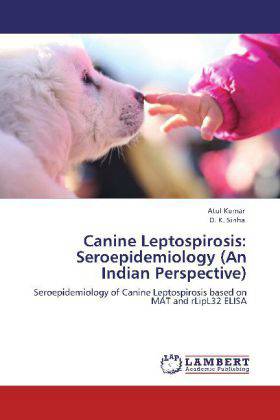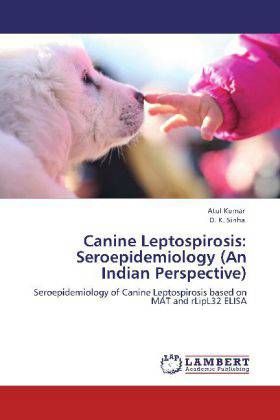
- Afhalen na 1 uur in een winkel met voorraad
- Gratis thuislevering in België vanaf € 30
- Ruim aanbod met 7 miljoen producten
- Afhalen na 1 uur in een winkel met voorraad
- Gratis thuislevering in België vanaf € 30
- Ruim aanbod met 7 miljoen producten
Zoeken
Canine Leptospirosis: Seroepidemiology (An Indian Perspective)
Seroepidemiology of Canine Leptospirosis based on MAT and rLipL32 ELISA
Atul Kumar, D. K. Sinha
Paperback | Engels
€ 63,45
+ 126 punten
Omschrijving
Canine leptospirosis is an acute anthropo-zoonotic infection of worldwide significance and it is emerging as an important problem during the last decade or so. Its seroprevalence and epidemiology has been reported throughout the world including India but precise and systemic information is meager. Hence, in the present study, association of different epidemiological factors responsible for leptospirosis in dogs and its seroprevalence in Indian context was estimated. Microscopic Agglutination Test is the corner stone and reference method for serodiagnosis of leptospirosis but the cumbersome nature of MAT precludes its usefulness in most clinical settings. Thus, the potential of a highly immunodominant, 32 KDa molecular weight, recombinant lipoprotein (rLipL32) was assessed using indirect ELISA. The present research revealed that rLipL32 based indirect ELISA is sufficiently sensitive, rapid and easy to perform for the seroepidemiological investigations and diagnosis of canine leptospirosis. However, MAT remains the gold standard test for serological identification of specific serovars and thus complements the rLipL32 ELISA as a second echelon seroepidemiological assay.
Specificaties
Betrokkenen
- Auteur(s):
- Uitgeverij:
Inhoud
- Aantal bladzijden:
- 108
- Taal:
- Engels
Eigenschappen
- Productcode (EAN):
- 9783848487509
- Verschijningsdatum:
- 12/04/2012
- Uitvoering:
- Paperback
- Afmetingen:
- 152 mm x 220 mm
- Gewicht:
- 168 g

Alleen bij Standaard Boekhandel
+ 126 punten op je klantenkaart van Standaard Boekhandel
Beoordelingen
We publiceren alleen reviews die voldoen aan de voorwaarden voor reviews. Bekijk onze voorwaarden voor reviews.








